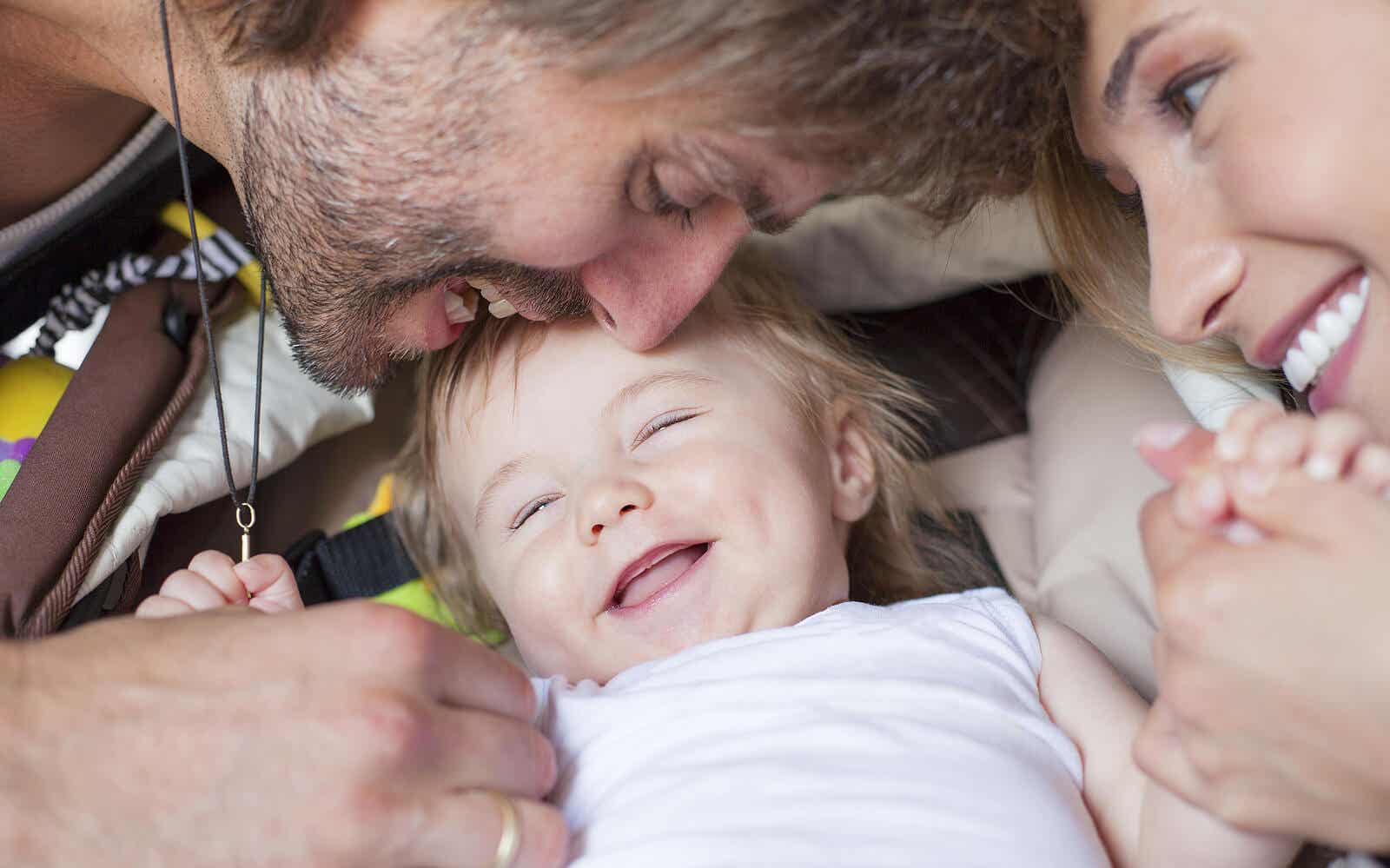How to Explain Attachment Theory with Oranges

Some of you, when listening to the word “attachment”, might think about a healthy bond between parents and their children. However, this isn’t entirely true, because there are four types of attachment. And, there’s only one type of attachment that has positive consequences for children and helps them grow emotionally. This is why, in this article, we’ll explain attachment theory with oranges.
Personality, emotional management, the way people relate to each other, and even the kind of partner they choose to spend their life with are directly related to the type of attachment they experience during childhood. Do you want to understand attachment theory in a simple way explained with oranges? Continue reading.
Attachment theory explained with oranges
Before we start explaining attachment theory with oranges, we should explain what we’re talking about. John Bowlby dedicated his life to analyzing the relationship between children and their primary caregivers. Then, he developed the attachment theory, which is very helpful to identify many problems in children and adults.

What is attachment? Attachment is an emotional bond or connection between children and their primary caregivers (mother, father, grandparents, etc.) from the day children are born. Its purpose is to guarantee attention and to help children form their personalities and promote their psychological development.
How to explain attachment theory with oranges
As we’ve mentioned before, there are four types of attachment or ways to bond with your children. In this article, we’ll try to describe them using oranges, so you understand them more easily. Actually, this is how Rafael Guerrero explains the attachment theory in his book Educar en el vínculo (Educate through Bonding). So, let’s get to it!
Secure attachment: oranges-oranges
Secure attachment is about unconditional support. In this case, children know their caregiver won’t fail them. Besides, they know that if they have a special emotional need, their primary caregivers will answer to it. Let’s see an example.
Our children might be sad because their friends didn’t want to play with them at school. First, we must connect with their emotion, and then we’ll try to calm them down. According to the orange metaphor, what we’re doing here is giving them what they need. If they need an orange, we’ll give them an orange.
Avoidant attachment: oranges-tangerines
In this case, children have already accepted that they can’t count on their primary caregivers, which causes them pain and anxiety. This is because, whenever children had an emotional need, their caregiver underestimated it. So, if children needed an orange, they received a tangerine. They may look alike, but they’re not the same thing.
Therefore, children with avoidant attachment learn to avoid asking for what they need, because it has been denied in the past. This type of caregiver is very rational, so they find it hard to understand their children’s feelings as well as their own.
Ambivalent attachment: oranges-orange tree
Whenever children with ambivalent attachment have a specific need, their caregivers react with an exaggerated response. Therefore, if children need an orange, they receive the whole orange tree. This kind of attachment is very common among overprotected and emotionally exaggerated parents.
Disorganized attachment: oranges-nothing
This is the most dangerous and negative attachment. In this case, whenever children have a specific need, they don’t receive any response. If children need oranges, they don’t get oranges, nor tangerines, nor the whole tree.
Caregivers who form this type of bond with their children usually suffer from personality disorders, such as serious depression, or schizophrenia. In fact, these types of parents may mistreat, abuse, or even abandon their children.

Attachment theory explained with oranges: “Learning to become autonomous after being dependent”
When we’re born we’re all immature and depend on our attachment figures. As time goes by, we overcome these needs if our parents or caregivers take care of them.
“We only become independent after being dependent”.
-Rafael Guerrero-
By saying that, Rafael Guerrero means that we learn to become autonomous after being dependent. By covering our emotional needs, our attachment figures teach us to do it ourselves in the future. As a result, we become more and more independent as we grow older.
About attachment theory explained with oranges…
By explaining attachment theory with oranges, you’re able to understand in a more visual way how bonds between primary caregivers and their children are formed. After reading all this information, you may realize that autonomy and bonding are the basis of a secure attachment. Besides, both of them should be balanced.
If you want to learn more about this topic, you should read Rafael Guerrero’s book. In his book, you’ll find tips on how to form a healthy bond with your children, and how to help them control their emotions and autonomy.
All cited sources were thoroughly reviewed by our team to ensure their quality, reliability, currency, and validity. The bibliography of this article was considered reliable and of academic or scientific accuracy.
- Guerrero, R. (2020). Educar en el vinculo.Barcelona:Plataforma.
- Bowlby, J. (1977). The making and breaking of affectional bonds. The British Journal of Psychiatry, 130(3): 201-210.